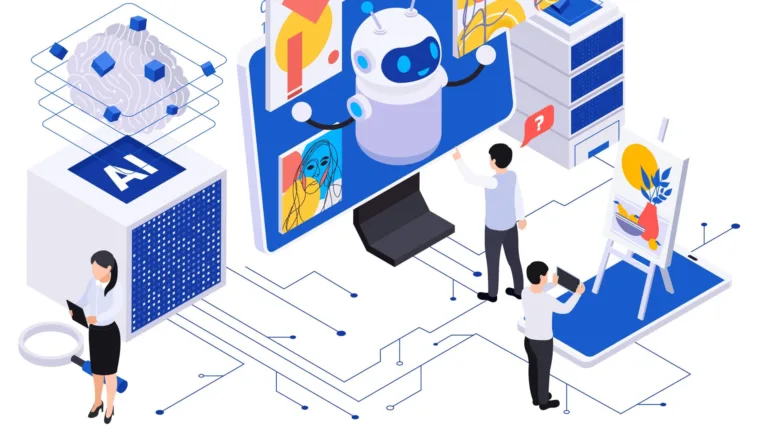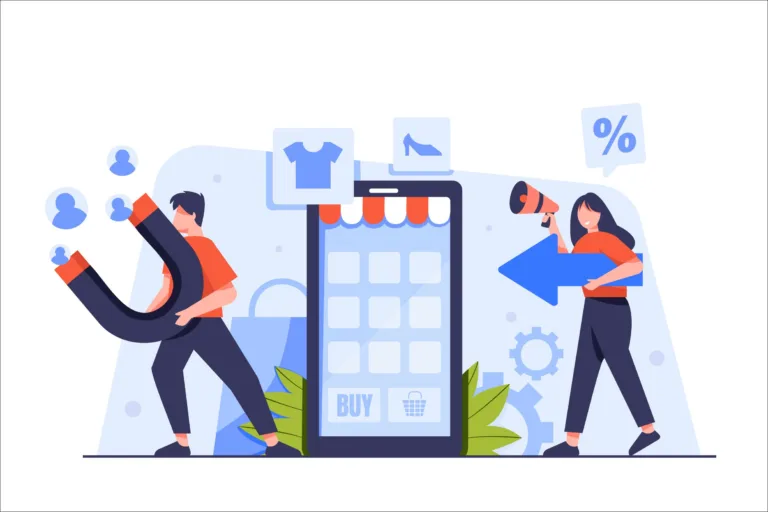Are you still relying on the traditional four-step marketing funnel — Awareness, Interest, Desire, and Action? Do you know the marketing funnel that you are following conceptualized in 1898? Do you think the purchase behavior has remained the same throughout these 120 years?
In the current world, the majority of your customers are locked in their homes. They have access to multiple digital gadgets. Marketing can no longer rely on the linear funnel approach. However, there is a piece of good news. We will discuss here the ways to fix your failing marketing funnel and drive sales for your e-commerce.
Small exercise for you:
Download the sales report for new and returning users from your ERP or Analytics platform. If you are using Google Analytics to measure success, here is the way to download the required report.
- From the left panel, go to Audience > Behavior > New vs. Returning
- Scroll up the page above the graph and select Ecommerce from the ‘Explorer’ tab.
Note the number of users and transactions from New Users and compare with Returning Users. You must have noticed now a considerable gap. The conversion rate and average order value are much higher for the returning visitors. If you have tried paid promotion to get the traffic, now you can estimate the profitability, which is usually very low for the new customer. Do not freak out! You are not alone.
We are familiar with the linear marketing funnel for a long time while customer behavior has changed in itself. In today’s world, a customer has multiple ways to connect with your brand on different devices throughout the day, and not only on the top of the funnel (TOF).
Many articles on the internet discuss what, why, how of a marketing funnel. Here we will focus on why the linear representation of a marketing funnel is just a dud. I hope to change your views and help you grow your business with the correct way to reach new users. Once you complete reading this article, you will no longer remain the same wide-eyed, impressionable business owner to marketing funnel propaganda.
What is wrong with the traditional Marketing Funnel?
Nothing! (yes, you read it correctly).
In 1898, Elias St. Elmo Lewis, an American advertising advocate — wrote and spoke about the theoretically mapped customer journey. The customer journey funnel is also known as AIDA-model. Then the internet was invented in the 1960s. The first e-commerce store — Boston Computer Exchange, was launched in 1982. it was not until 1994 that e-commerce, as we know it today, started to take off. In today’s world, your potential customers have access to many devices, evaluating products on a different platform, have a pool of knowledge (including information from influencers) available to them. Today’s customer gets into the conversion path at many points, with many different intentions. Today’s scenario is not the same as it was in 1898.
The traditional marketing funnel falls short for
- Too much focus on the Top of the Funnel
- Lacks efforts at the Bottom of the Funnel
- Do not explain the behavior of buyers who enter the Middle
The customer journey funnel does not explain how to treat the customer who just converted. Once your leads become paying customers and get out of the Bottom of the funnel, it completes the journey. All focus shifts back to the top to attract strangers once again. Marketers often invest more energy and money in acquiring new customers at the top of the funnel. Too little attention goes to the paying customers, who feel the disconnect and churn sooner than expected.
The alternative new idea
HubSpot at the annual marketing conference, INBOUND, introduced the concept of the FlyWheel as the new model for growth. FlyWheel considers customers at the center of modern businesses. In FlyWheel, happy customers are the energy that boosts business. FlyWheel’s success depends on attracting an engaged audience and delighting the paying customers. A delighted customer will speak about your business to their friends. Paying customers are therefore evangelists of your brand.
The challenge for you is to groom the right evangelist for your brand. You need to provide incremental value. A value that gets paying customer’s attention keeps them engaged and delighted. Crafting the right set of influencers is the core of success.
Influencers and their audience are vital to your business. These audiences are more informed about your brand than those strangers at the top of the funnel. Their ‘purchase journey’ also not going to be the same. Your paying customer may refer someone close, who directly purchase the product. At times potential customer gets to know your brand from forwarded emails. They ‘desire’ your product and join the mid of the funnel. Therefore it is the key to make every customer journey special, even after they become your paying customer. The happier they feel, the faster your FlyWheel will turn and help your business grow.
Is FlyWheel a perfect alternative to Marketing Funnel?
Of course not!
FlyWheel allows us to visualize customer touchpoints at every stage of their journey. In real life, however, a customer journey is not linear or round. It is omnichannel. In today’s connected world, a customer journey is less about touchpoints. Accumulated thoughts of many paying and potential customers are interacting throughout the days and hours on different platforms. Social media, forums, review websites are just the peak of an iceberg affectionately know as web 2.0
Every time a customer writes positive reviews or shares their emphatic experience, it can drive many potential customers to your business. Do you remember the calculation we did at the beginning? You can delight customers at a fraction of that cost. Engaged customers who sing your story can generate a steady flow of leads.
TL;DR, Positive customer experience improve brand loyalty and bring new referrals that deliver high lifetime value for the business.
Arijit, a seasoned marketing professional with over a decade of experience, is your go-to expert for managing brands and marketing communications online. With a passion for developing strategic and integrated brand strategies, Arijit excels at creating high-converting online marketing plans that drive growth and achieve business goals.





